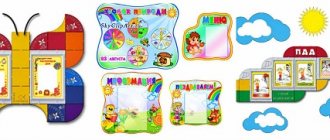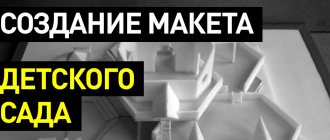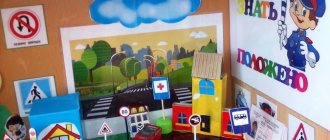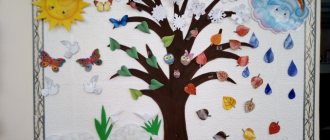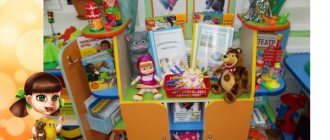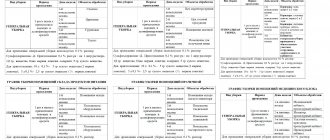Local history corner in the developing subject-spatial environment of the group
Modern teachers believe that the basic stage of developing love for the Motherland in children should be considered their accumulation of social experience of life in their village, assimilation of the norms of behavior and relationships accepted in it, and introduction to the world of its culture. Love for the Fatherland begins with love for one’s small Motherland - the place where a person was born.
Psychological and pedagogical research has shown that local history classes are available to preschool children.
What is local history? Local history is the study of a certain part of the country, city, village or other settlements by the local population, for whom this territory is considered their native land. “Edge” is a conditional concept and depends on who is studying it and for what purpose. This could be a city, a district, or a street, that is, what surrounds us.
One of the important conditions in the work on local history is the creation of a developing subject-spatial environment in the group.
When designing and selecting materials to create a local history corner in our group, we adhered to the following rules:
— the material must be understandable and accessible to the age of children;
— the materials must be sufficiently bright and saturated;
- provide children with the opportunity to participate in creating a corner.
The corner is located in an accessible and safe place. Children can take materials, games, and objects from the man-made world. Also, the corner can be transformed into a mini-museum, workshop, or exhibition of children's creativity. The presence of multifunctional objects, including natural materials, for use in various types of children's activities, including as substitute objects.
An important condition for success in this work is close communication with parents (legal representatives). We took part in collecting local history and educational material to replenish the local history corner: family photos, a laptop, information about Irgiz, the village, the “Love and Know Your Land” stand, design of the exhibition “Unofficial Symbols of Russia.
The information in the corner is presented in sections:
- “My family”: family photos, family tree, lapbook, children’s drawings, poems, statements about family, educational games.
- “Kindergarten”: group plan, photos of kindergarten staff, poems, we are working on creating an album “Our everyday life and holidays.”
- “Native Village”: album “Our Land”, photos of attractions, photos of famous people of the village, magazines, coat of arms of the village, information about the Irgiz River, about the village, visual illustrated and reference material “Animals and Plants of the Native Land”, game “Fifth Odd” , children's drawings.
- “The City of Samara”: map, symbols, photos of attractions, a set of postcards.
- “Country Russia”: map, symbols of the country, photo of the president, didactic game “My Russia”, illustrated and reference material.
- “Our Army”: didactic material, albums for viewing, awards of the Great Patriotic War, folder “May 9”.
- “Russian National Culture”: mini-museum of applied art - products of folk craftsmen: matryoshka, whistles, Kargopol, Fillimonov, Dymkovo toys, Zhostovo tray, Vologda lace, birch bark products, Khokhloma spoons, model “Russian hut” rag dolls, visually illustrated material: “Folk traditions and holidays”, “Russian costume”, “Folk paintings”.
The tasks of moral and patriotic education are implemented not only through the content of the local history corner , but also through the content of other areas of independent children's activity:
— samples of decorative and applied arts are presented in the children's creativity center;
— in the center of the game there are thematic sets for role-playing games: “Barbershop”, “Hospital”, “Shop”, “Farm”. These games help enrich children's ideas about professions.
— in the corner of cognitive development there are games, lotto “Professions”, a floor folder, poems;
— Russian folk tales, epics, and small folklore forms (rhymes, riddles, poems) are placed in the literary center.
Thus, not only the local history corner, but also the entire subject-development environment of the group is aimed at solving the problems of moral and patriotic education of preschool children.
What is it for?
Raising a patriot cannot be successful without referring to the culture and history of one’s region. Today, much of the life of our ancestors has been lost and forgotten, the way of life of the people has changed greatly, and we turn so little to our roots, but the unique culture of the Russian people has been formed over centuries and is full of various customs, traditions and rituals.
Knowledge and understanding of folk culture, the desire to join its further development in the future will become motives for active creative activity of a person if patriotic education begins from early childhood.
Decorating a patriotic corner in a kindergarten with your own hands will help teachers and parents organically introduce the child to the world around him, introduce him to his native culture, the eternal and the beautiful.
Rack for sports equipment
Decorating a sports corner with your own hands is done in the active games area. For bright hoops, clubs, balls and jumping ropes, it is necessary to organize aesthetic and convenient storage with special holders, nets and shelves.
To equip the corner, you need to use the safest plastic or fabric products.
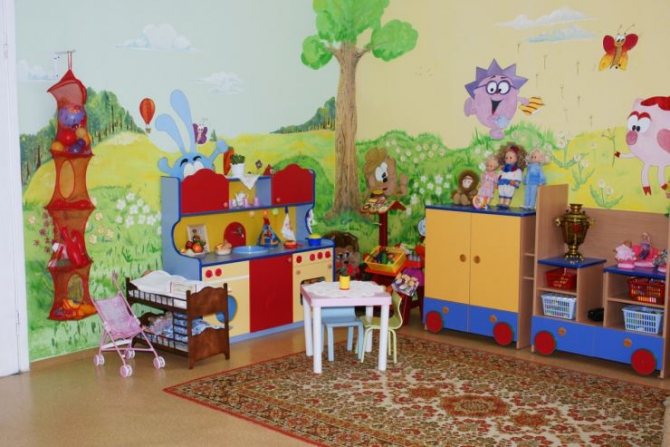
The contents of the exhibition can be supplemented with homemade items, such as fake fishing rods or other devices for developing dexterity.
Subject developmental compositions in kindergartens
Exhibits with special paraphernalia on traffic rules, hygiene and healthy eating, shelves with musical instruments, books or pencils are also located in separate areas with a thematic design.
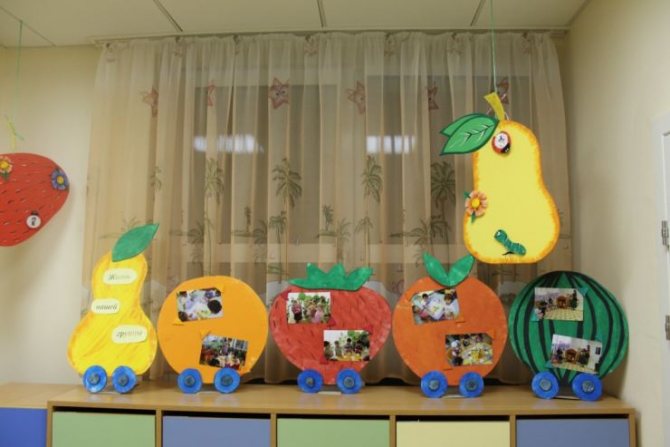
According to the requirements of modern pedagogy, privacy zones can also be created in playrooms and classrooms - houses, tents, curtained areas with upholstered furniture.
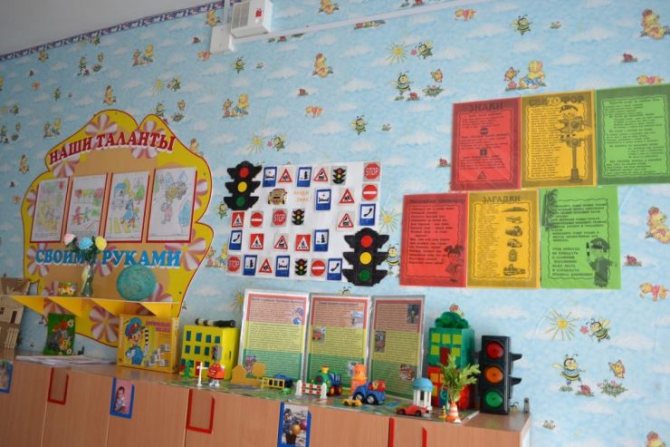
In the process of decorating corners with your own hands, you can use photo collections with successful solutions.
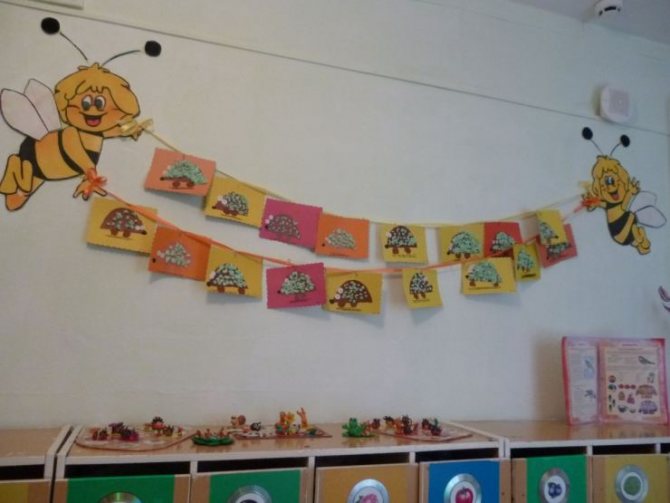
Older children - tasks are more difficult
More complex concepts become accessible to the understanding of four-year-old children, therefore, complementing and developing the topics covered in younger groups, teachers and parents continue the direction of education we are considering, placing new materials in the patriotic corner in kindergarten. The design should influence the development of the child’s personality. It is important that not only literature, illustrations and teaching materials are used, but also elements of independent and joint activities. Preschoolers can play with friends or with adults, mastering the posted materials and making interactive connections.
The design of a patriotic corner in a kindergarten in the middle group should be beautiful, bright, attractive and interesting for children. There can be nothing damaged, broken or torn here. It’s good if the colors and shades used are correctly combined with each other and are pleasing to the child’s eye. All materials are updated from time to time.
In the middle group, most of the patriotic work takes place in and outside of class. These include purposeful walks along nearby streets and getting to know the administrative buildings located on them (shop, pharmacy, post office, etc.), reading fiction, talking with children about the nature of their hometown. All new information that children receive should be supported by materials in the patriotic corner.
From hometown to country
Various materials on the following topics will help you continue your acquaintance with your hometown: “How did the city arise?”, “What is produced in our city?”, “The culture of my city,” “Famous fellow countrymen,” “During the Great Patriotic War,” “Sights” , "Architecture". Parents and educators can jointly create a selection of poems about the city.
The map of the locality and its symbols should also replenish the patriotic corner in the kindergarten. The design of an exhibition about the native land may contain symbols and a map of the region, information about its cities and famous places, and when children perceive this information, they will be ready to get to know their native country. Here you can’t do without a map of Russia. Modern printing produces special children's cards containing material accessible to children's understanding. And, of course, Russian symbols should appear in a prominent place - the coat of arms, flag, anthem and portrait of the president.
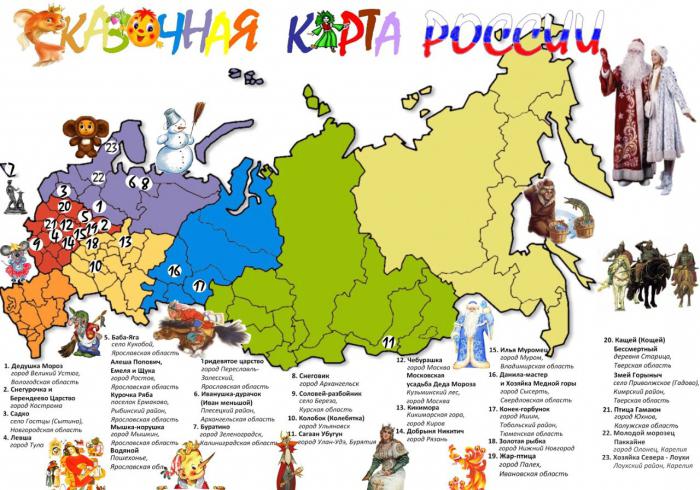
Where to start?
It is still difficult for kids who have just arrived in kindergarten to think in terms of a city, country, or culture. For them, the homeland is their immediate environment, so information about home and family that is accessible to children of this age should be contained in a patriotic corner in the kindergarten. The design of the 1st junior group requires a simple but bright design. It is important to attract children's attention and arouse their interest. At this age, speech is actively being formed, so everything should contribute to development, encourage the baby to recognize and name. Children can first simply observe the activities of adults who look at albums, naming all family members in the photos. Gradually, imitating adults, they themselves will begin to do this.
Information board in children's institutions
When decorating a corner for parents with your own hands, the overall aesthetics of the institution are preserved. The composition, as a rule, is placed in the reception area, the most optimal place is above the changing lockers or at the entrance to the room.
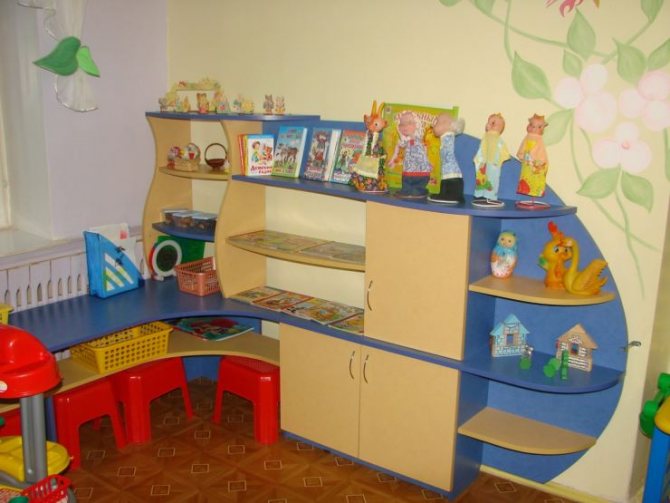
A section of the wall is decorated with bright, cheerful drawings or wall relief figures, the details of which can be supplemented with seasonal or festive elements.
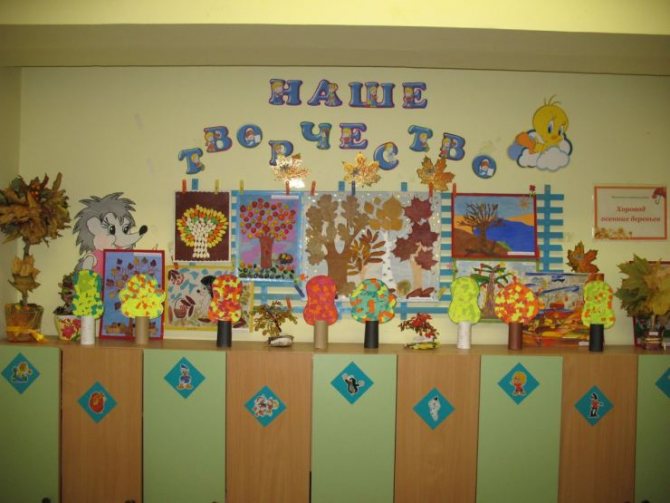
How to fill the patriotic corner in the nursery group?
This can be any material on social and moral development:
- Thematic folders containing illustrations with images of family members demonstrating their relationships, care, and joint affairs.
- Photo album “My Family” with images of pupils in a family environment.
- An album or exhibition “Here we live”, in which you can place photographs, illustrations or models of streets or various architectural buildings (kindergarten, school, houses where children live, other city objects).
- Exhibitions introducing the origins of Russian folk culture, which may contain a variety of antiquities, traditional toys (wooden and rag dolls), amulets, exhibits of decorative and applied art (painted nesting dolls, trays and other utensils with Gorodets, Khokhloma and Gzhel painting, Dymkovo toys , embroidered towels, scarves, knitted napkins, tablecloths and other items).
Fiction, works of folklore - songs, jokes, nursery rhymes and fairy tales - can also be placed in a patriotic corner in a kindergarten. The design of the nursery is meant to be colorful and understandable; it should not contain a lot of text; it is better if it is visual material that attracts the attention of children and their parents. It is important to remember the safety requirements, which are the same for all corners: all materials must be placed so that they cannot fall or injure the child. No sharp corners or edges are allowed.
What do we call home?
In older preschool age, the tasks of patriotic education become more complicated, children continue to get acquainted with their native land, study not only their city, but also the region and the country, receive information about state symbols, the historical past of Russia, and the national calendar.
The material placed in the patriotic corner in kindergarten also becomes more complex. The decoration is complemented by children's and family creative works. For example, while continuing to study the topic “My Family,” children and their parents create a family coat of arms or family tree. Family albums placed in the corner, which children love to look at and show to each other, will also be interesting.
